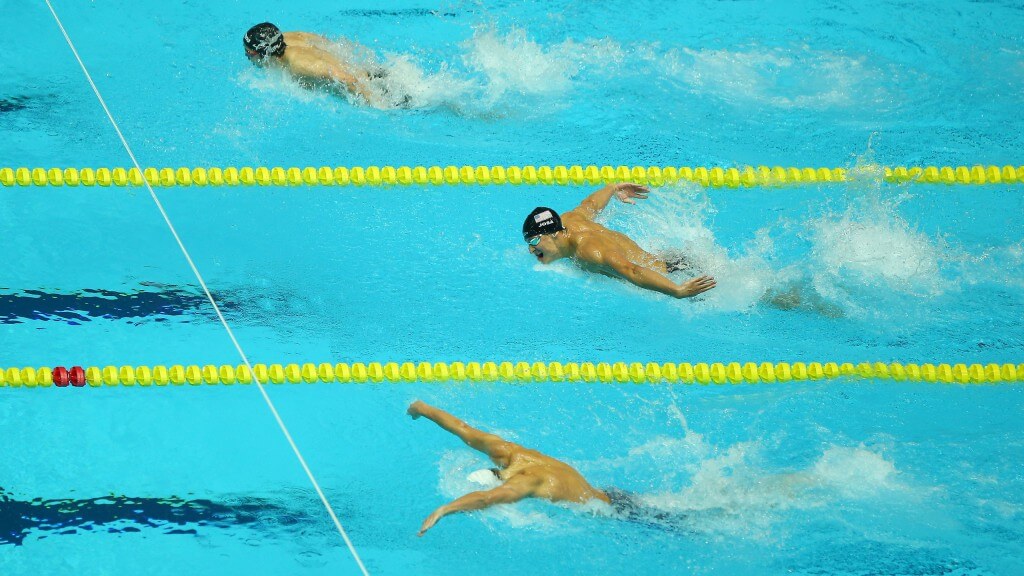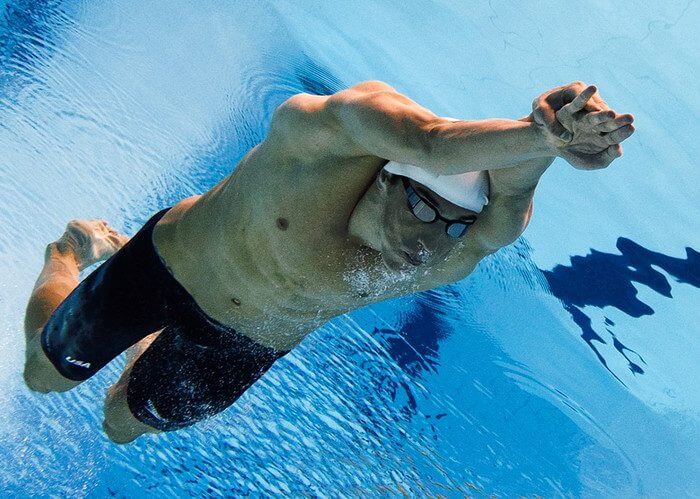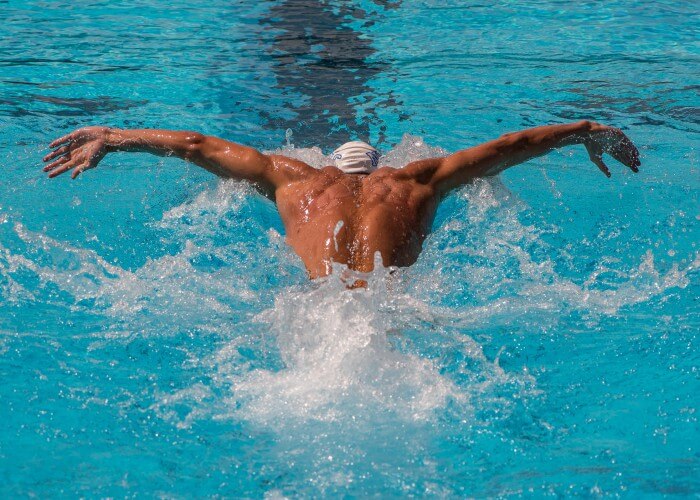The Butterfly: A Complex History for a Complex Stroke

By Joe Buchanan, Swimming World College Intern.
The butterfly stroke is a test of endurance, fortitude, and shoulder strength. Often regarded as the most complex stroke to learn, it has become a staple of swim meets and punishing practices.
The history of this infamous stroke is confusing and attribution for its creation varies from source to source.
In all accounts of its history, the butterfly stroke began as a mutation of the breaststroke. Like the stroke itself, its history can be split into two parts: the dolphin kick and the pull.
The Dolphin Kick

Photo Courtesy: Agence France-Presse
There are two people recognized as the creators of the dolphin kick: Volney Wilson and David Armbruster.
Wilson was a physicist in the early 1900s who was most well-known for his work on The Manhattan Project and was recognized as the originator of the dolphin kick by historian Richard Rhodes in his 1986 book “The Making of the Atomic Bomb.”
Wilson was an avid swimmer in his life, and according to Rhodes’ account, began to study how fish moved through the water at a local aquarium. Wilson noted the back and forth movement of the fish’s tails and began to mimic it.
Wilson used this new kick, paired with the breaststroke pull, in swim meets and eventually in the 1938 Olympic Trials before being disqualified, as the kick was deemed illegal under FINA’s breaststroke guidelines.
The International Swimming Hall of Fame recognizes Armbruster, University of Iowa’s swim coach from 1917-1958, as the creator of the dolphin kick.
After watching a demonstration by George Corsan Sr. of a kick in which both feet moved together, Armbruster began to develop what would be known as the dolphin kick with one of his swimmers, Jack Sieg. In its beginning stages, Sieg swam on his side, beating his legs in unison. Eventually, the stroke developed into Sieg using the dolphin kick while face down in the water, paired with the breaststroke pull.
The dolphin kick is not only notable for its place in the history of the butterfly stroke, but also in the history of swimming. The dolphin kick is the fastest kick recognized by FINA and is used after the flip turn in both the freestyle stroke and the backstroke. The development of this kick, whether by Wilson or Armbruster, was a monumental development for the sport of swimming.
The Butterfly Pull

Photo Courtesy: Peter Bick
The originator of the butterfly’s pull is vaguer than that of the kick’s. There are four men noted as potentially being the creator of the pull: Armbruster, Erich Rademacher, Henry Myers, and Sydney Cavill.
In the early 1900’s these four men were developing different methods to improve their breaststroke times.
Rademacher, a German swimmer, used the butterfly pull paired with the breaststroke kick in swim meets in the late 1920’s.
Myers, an American swimmer, is noted for using the pull in a swim meet against Wallace Spence, the medley champion of the time. Though confused by the pull, the officials determined Myers was still legally performing the breaststroke.
Armbruster is reported to have developed the pull while looking for a quicker recovery method for his breaststroke swimmers.
The International Swimming Hall of Fame though, credits Australian swimmer Cavill as the developer of the pull.
The Butterfly Stroke
The first person to connect both the kick and the pull is either credited to both Armbruster and Sieg, or Japanese swimmer Jiro Nagasawa.
The International Swimming Hall of Fame credits Nagasawa as one of the first to perform the stroke, setting the first world record in the butterfly stroke, as well as winning many breaststroke races using the butterfly-breaststroke.
Armbruster was said to be the originator of the butterfly stroke as he combined the pull he was working on for breaststroke with the dolphin kick that he had developed with Sieg.
FINA officially recognized butterfly as a legal stroke in 1954, while the 1956 Melbourne Olympic Games were the first to feature butterfly as its own event.
All commentaries are the opinion of the author and do not necessarily reflect the views of Swimming World Magazine nor its staff.




I don’t know why but this is my favourite stroke. I hate freestyle and backstroke. My breaststroke has gotten better but butterfly will always be my strongest and I enjoy it the most for some reason.
I agree
Butterfly is also my favourite stroke.
I’m not sure your research is complete. I believe Chuck Gantner might have been the first to adopt the butterfly pull whilst using the breaststroke kick. Chuck swam for Rutgers and before that, the Blair Academy. He wa selected to the US Olympic Team but because of WWII his games were canceled.
Emma Beanland
Interesting history
Is also me favourite stroke
Patty Eppingher
Youssef Yasser
Olivia Phillips?
Also my favorite one.
Anne Warren